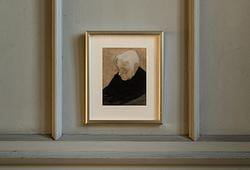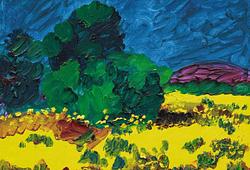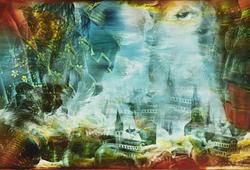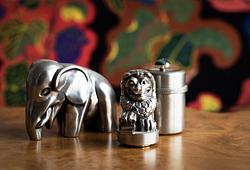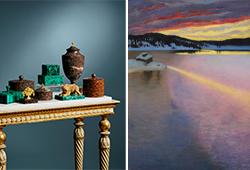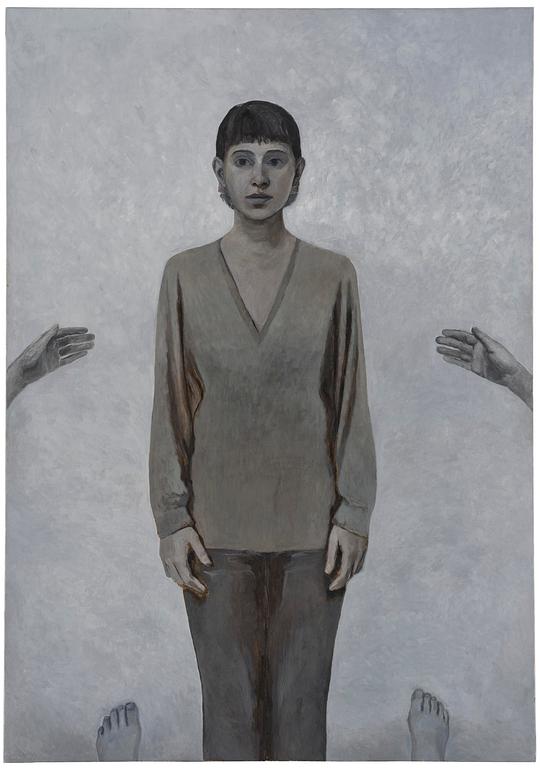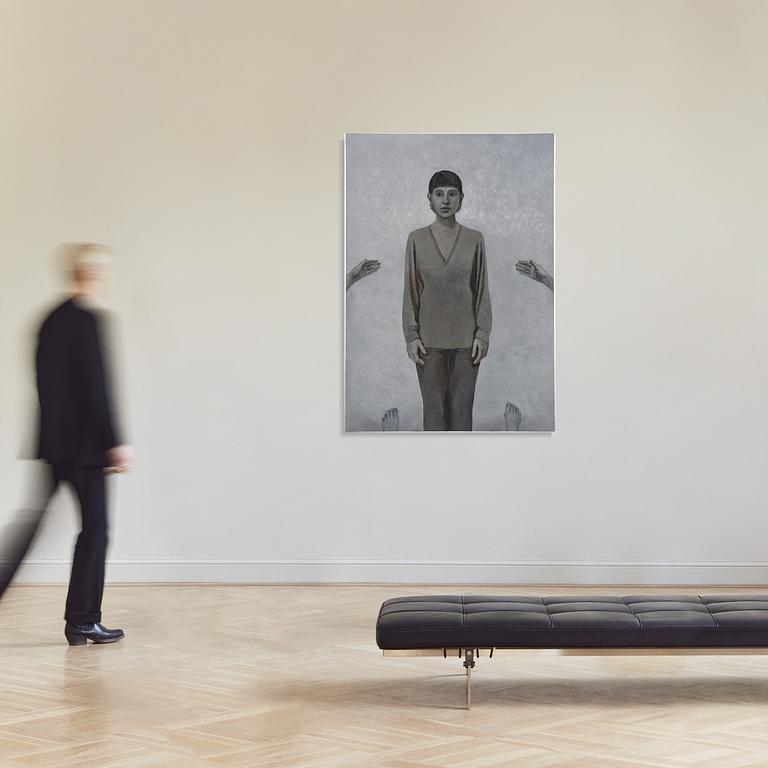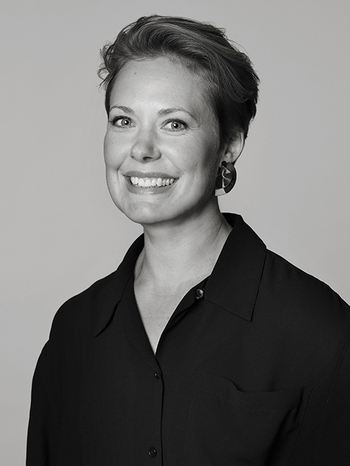Cecilia Edefalk
"Over the border"
Signed Cecilia Edefalk and dated 1990-91 verso. Canvas 191.5 x 134.5 cm.
Provenance
Gallery Sten Eriksson, Stockholm.
Stockholms Auktionsverk, Moderna Kvalitén, 1 -3 November, 2006, lot 1261.
Private Collection, Stockholm.
Exhibitions
Irish Museum of Modern Art, Dublin, "Cecilia Edefalk / Jan Hafstrom", 1992.
More information
Cecilia Edefalk, born in 1954 in Norrköping, is one of Sweden’s most prominent contemporary artists, with a long and influential career both nationally and internationally. She studied at Konstfack University of Arts, Crafts and Design in Stockholm, Birkagården Folkhögskola and the Royal Institute of Art in Stockholm.
Edefalk had her major breakthrough in 1990 with the exhibition “En annan rörelse” at Galleri Sten Eriksson in Stockholm, where she presented seven paintings with the same motif in different variations - an approach that has come to define her entire artistic practice. Her method is characterized by slow, contemplative processes where she works in series and continually explores the conditions of the image through repetition, variation, and transformation.
A key work in her production is the painting “Over the border” (1990–1991). In this piece, she consciously explores the relationship between painting and photography for the first time by incorporating a painting as part of a photograph. The process involves painting a self-portrait, photographing the painting, and then painting the photograph - creating an image in multiple layers: painting, photography, and painting again. This method opens up a deeper investigation of themes such as reflection, repetition, and change, which Edefalk has continued to explore throughout her career. In “Over the border”, she uses grisaille, a painting technique in grayscale, which lends the work a dreamlike, almost shadowy atmosphere and shifts the focus to form and body rather than colour and background. The hands and feet in the painting seem to sense the boundaries of the image, as if the figure is probing its own presence in space.
This work foreshadows the series “Echo” (1992–1994), consisting of twelve paintings in which the same motif is repeated with small variations, each new painting is based on the previous one rather than on a photograph. Through these subtle shifts and differences, Edefalk shows how an image is never exactly the same when reproduced, and how changes influence the viewer’s way of seeing and interpreting the motif. The delicate brushwork with many thin layers of paint creates a sense of vulnerability and openness, where some parts of the paintings are left open or unfinished, contributing to a ghostlike and almost spiritual atmosphere.
Edefalk has long been fascinated by the expression of icon painting and the spiritual charge found in such works. Even though her paintings lack religious context, they often give the impression of angelic or ghostlike figures moving through space.
Cecilia Edefalk’s artistic practice is characterized by a continuous dialogue between images, where motifs and themes multiply and transform over time. She explores questions of original and copy, model and replica, and the relationship between portrait and reflection. Her work can be seen as a meditation on how we experience reality and how images function as catalysts for awareness and interpretation.
She moves freely between painting, photography, and sculpture, often creating works that are part of spatial installations, expanding the traditional field of painting. While her production is relatively small, each work is meticulously crafted and thoughtfully executed, and she never lets go of a motif until she feels it has been fully explored.
Throughout her career, Edefalk has exhibited at many internationally renowned institutions, including the Venice and São Paulo Biennials, Documenta in Kassel, the Museum of Modern Art in New York, Kunsthalle Bern, and the Moderna Museet in Stockholm. She is represented in several major collections, including Moderna Museet,t Göteborgs Konstmuseum and Nordiska Akvarellmuseet. Her work has also been shown at prestigious galleries such as Gladstone Gallery in New York and carlier | gebauer in Berlin.
Edefalk’s figurative painting played a key role in the return of figurative art during the 1980s and 1990s. Through her conceptual and restrained expression—often reducing visual content to clarify what remains - Cecilia Edefalk has created a distinctive artistic voice. Her work is about how we see, perceive, and interpret images, about the time that passes between original and copy, and about the meditative nature of returning to a motif again and again.
She is an artist who, in her investigation of the image as both object and process, constantly challenges and deepens our understanding of art and reality.




